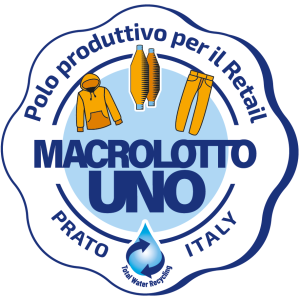A. SCHEME OF THE WATER RECYCLING PRODUCTION PROCESS.
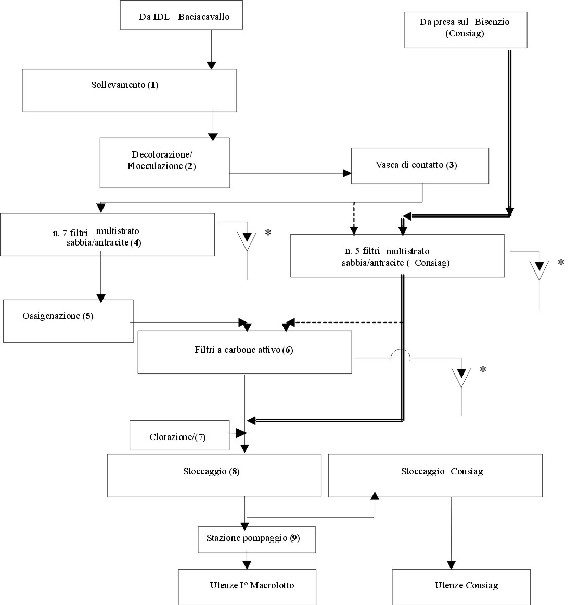
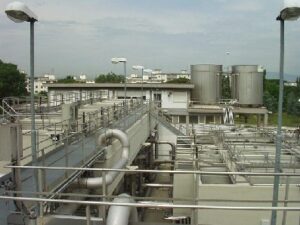
B. DESCRIPTION OF THE PHASES OF THE PURIFICATION PROCESS
The water coming from the Baciacavallo purifier inside a tank called – first lift – is pumped in order to allow the subsequent processes to take place by gravity.
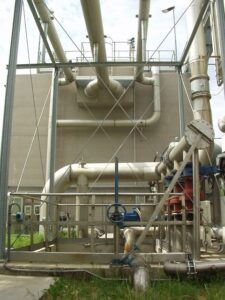
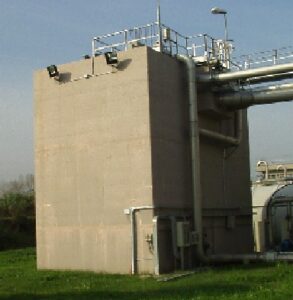
B.2 MIXING TANKS
The water coming from the first lifting is added with substances capable of eliminating, through chemical precipitation, any dye residues present and is subsequently sent to mixing tanks to encourage the formation of the precipitate and keep it in suspension.
The tanks are equipped with partitions which constitute a mandatory path and favor the homogenisation of the treated water.
B.3 FILTRATION ON ANTHRACITE SAND
All the suspended substances which have coagulated into flakes following previous treatments are retained on the sand/anthracite filters. In these filters the dyes and solid bodies in suspension, which have aggregated due to the treatments already undergone, are more easily captured. The filters are periodically subjected to backwashing and the wastewater coming from the backwashing of the filters is sent back to the beginning of the IDL purification process. To carry out the washing, water that has already undergone treatment with the same filters and which is specifically stored inside tanks is used.
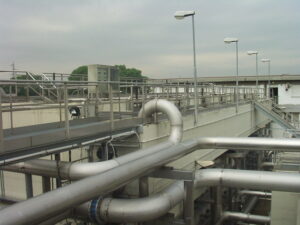
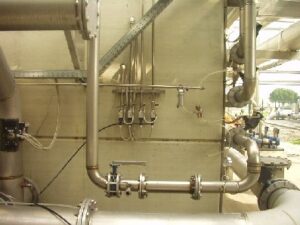
B.4 OXYGENATION
Before moving on to the treatment on activated carbon filters, the water coming from the sand filtration is saturated with oxygen to encourage the growth of a bacterial biomass which will carry out a sort of biological regeneration of the activated carbon granules. Oxygen saturation is achieved using special injectors.
B.5 ACTIVATED CARBON FILTRATION
In this phase, the substances that have escaped the previous treatments are retained by the activated carbon through a chemical-physical adsorption process. The activated carbon filters are subject to periodic backwashing as happens with sand filters, furthermore they are periodically subjected to a thermal regeneration process which allows all the substances retained by them to be burned. In the past, when the previous oxygenation phase had not yet been introduced, the filter was regenerated every 4/6 months, subsequently, thanks to the introduction of the bio filtration process, we moved on to a regeneration cycle of two and a half years.
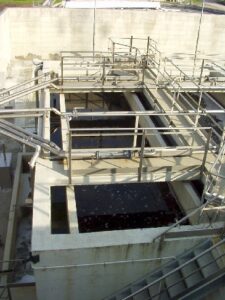
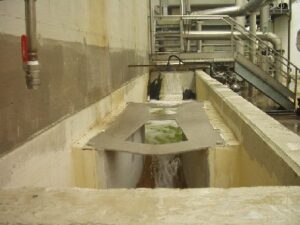
B.6 DISINFECTION
Before being sent to final storage, the recycled water is subjected to a disinfection treatment by adding sodium hypochlorite and hydrogen peroxide.
B.7 FINAL DISTRIBUTION
The final storage consists of two tanks in parallel with a volume such as to guarantee an autonomy of 8/9 hours which has the function of: dampening the peaks guaranteeing homogeneous production, having greater autonomy of intervention in the case of management of any situations emergency situations connected with the various process phases, be able to proceed with the disconnection of only one of the storage tanks for the water produced.
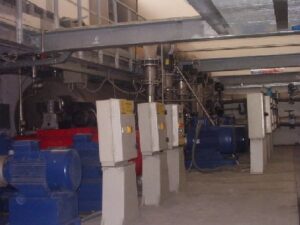
The annual production potential of recycled water has increased to 5,000,000 cubic meters thanks to the latest expansion completed in 2004 and is sufficient on its own to cover the needs of the entire industrial area of Macrolotto I.
The qualitative characteristics of the water supplied comply with the limits set by the Ministerial Decree. 185/03 for industrial reuse water. Before being sent to the users, the water intended for the I Macrolotto passes through a pumping station which allows a network pressure of approximately 4 bar to be maintained.
The industrial aqueduct of the I Macrolotto also performs an important function as a source of supply for fire prevention services.
